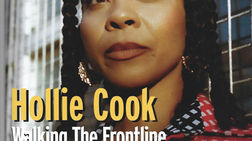Funkadelic - One Nation Under A Groove
- John Masouri
- May 10, 2018
- 4 min read
Updated: Dec 18, 2020
Like many UK teenagers during the late sixties, I grew up listening to a broad spectrum of music that included pop, blues, rock and roll, folk, soul, Blue Beat, jazz and psychedelic rock, yet nothing prepared us for Funkadelic. Sam Szczepanski commissioned this series of P-Funk liner notes for Charly Records, for which I remain truly grateful.


































Comments